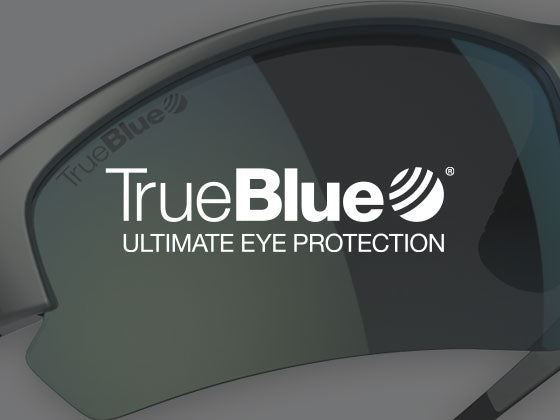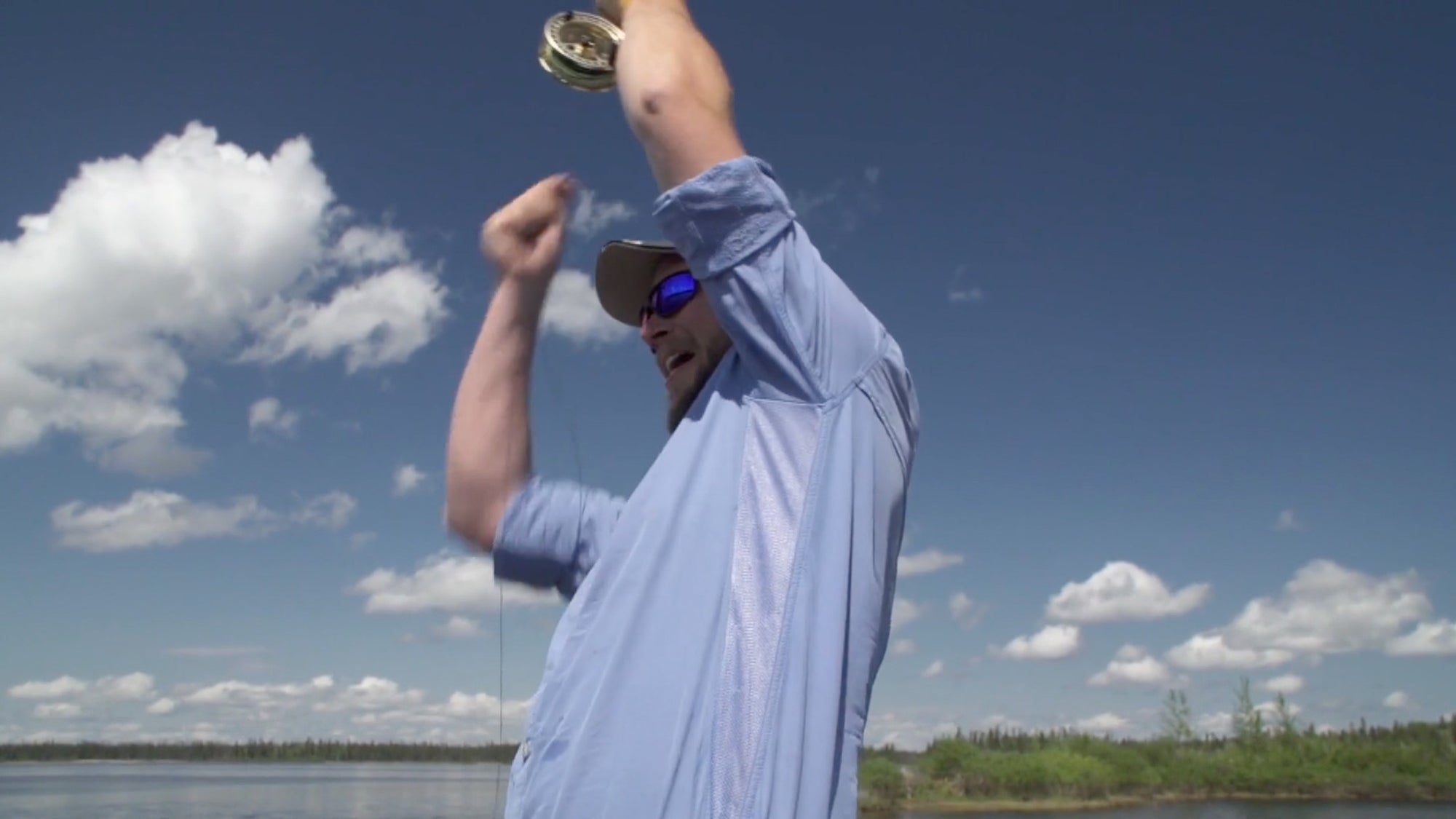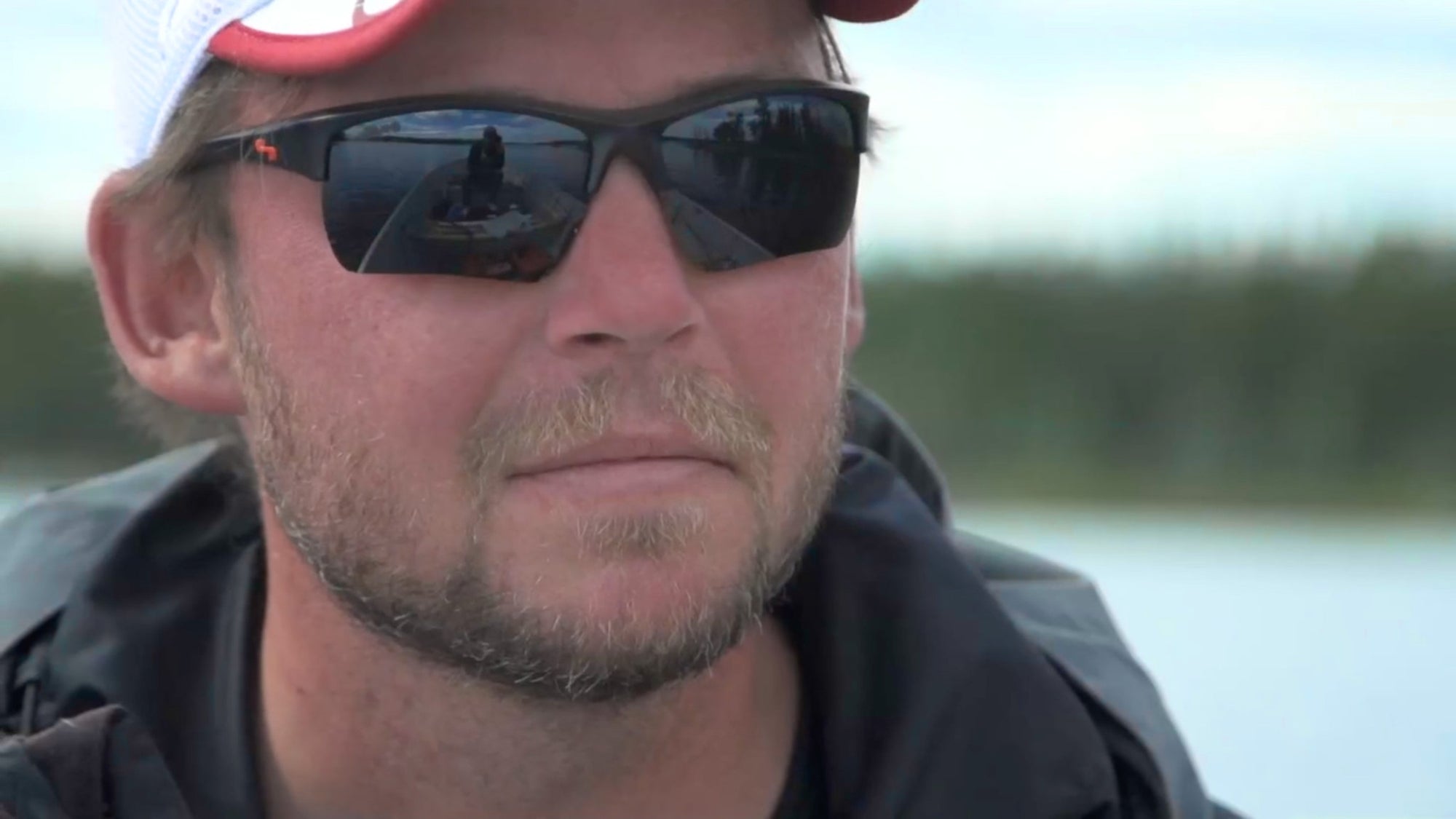We had an interesting experience this summer fishing out of Miminiska Lodge on the Albany River. I was guiding three gentlemen, one from England and two from Norway. They were at Mim to shoot video and write articles about the fantastic fishery surrounding the lodge. Brook Trout, Northern Pike and Walleye were the order of the week. One gentleman was fishing conventional, one on fly and the third was the cameraman. I was concerned because of the time of year they chose to fish. It was August and it was HOT and Mim was seeing water levels lower than seen in recent years. We didn’t have any trouble catching walleye, but pike and brook trout were (for the first 2 days) proving to be a challenge. VERY unlike Miminiska – then we figured it all out and lit… it… up!
Fish are interesting creatures. They are cold blooded and are very sensitive to environmental conditions. Food, oxygen levels and of course, temperature all plays key factors in their behavior, how much they feed, where they move and their overall metabolism.
When it’s warm, too warm, baitfish will move to areas that are more suited to maximize their metabolism and where they are most comfortable. Predatory fish such as pike, walleye and brook trout with either follow the bait or beat them to the punch and move into areas that are suited to their comfortability. Everything is directly related to temperature when it comes to food and because fish can’t regulate their body temperatures, they must find their optimum sustainability temperature. If they can’t find that temperature, their metabolism either speeds up or slows down. When fish metabolism speeds up, (water is too warm) the fish’s breathing rate also increases requiring more oxygen. Problem is, as the water’s temperature goes up, the amount of oxygen in the water drops. When fish’s metabolism goes down, they become more lethargic, which affects feeding and reproduction.
So what is the optimum temperature range for the fish you can target at Miminiska?
| Northern Pike: range 56 F– 74 F with an optimum temperature of 63 F |
| Walleye: 50 F – 76 F with an optimum temperature of 67 F |
| Brook Trout: 44-70 with an optimum temperature of 58 F |
So what happened to the video production?
We were able to locate cooler August water for northern pike on the main lake, and were able to get our job done on that front. What happened on the Freestone River the next day was nothing short of remarkable. Pool 1 is traditionally excellent fly-fishing for brook trout. We arrived, and after I dipped my hand in the water, I was worried. It was like bathwater. We swung flies through the pool and landed some nice walleye, not our species of choice. Tried for a half hour more and made the decision to make a move to find cooler water. I drifted the Freestone with my hand in the water for about another half hour when I noticed a dramatic temperature change leading into a run of faster water ending with a deep medium flow pool. We started fishing dry flies and had immediate success. The water temperatures had dropped due to subsurface springs feeding the river. The fishing was so good, we ended up staying at that run and pool for the remainder of the morning and were able to complete the bones of what video needed to be shot, landing and releasing a dozen brook trout all in the 2-5 lb range. It was the decrease in temperature that pushed all the fish from the upper river into that pool. They must have been thick as thieves there and I wish I had my snorkel gear to witness it. We spent the rest of the float with our fingers in the water. Feeling for temperature changes, and we did come across a number of springs downstream.
Temperature is the key factor in locating fish to catch and it’s important to respect the upper limits of fish’s tolerance in warm water. Recovery from a fight, even from the very best of anglers can prove lethal if water temperatures don’t allow for recovery. It’s best to put in the work to find the optimum temperature range when angling for all species of fish in any body of water when practicing catch and release.








